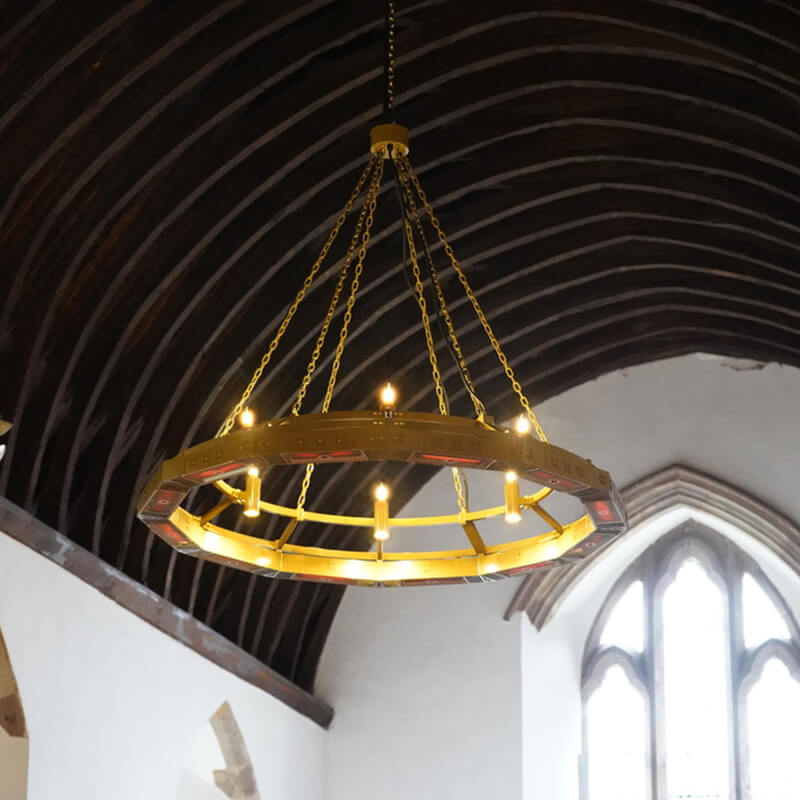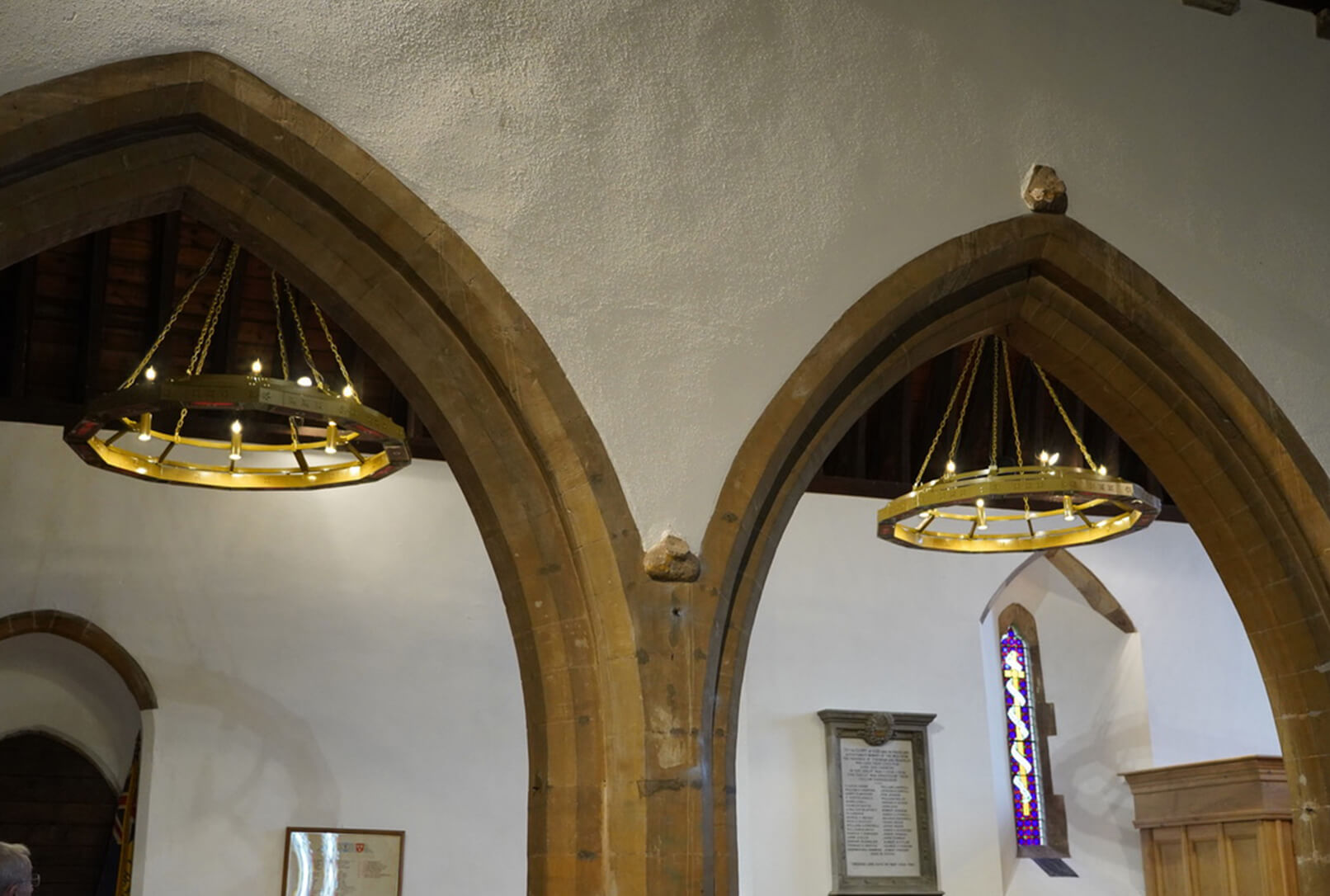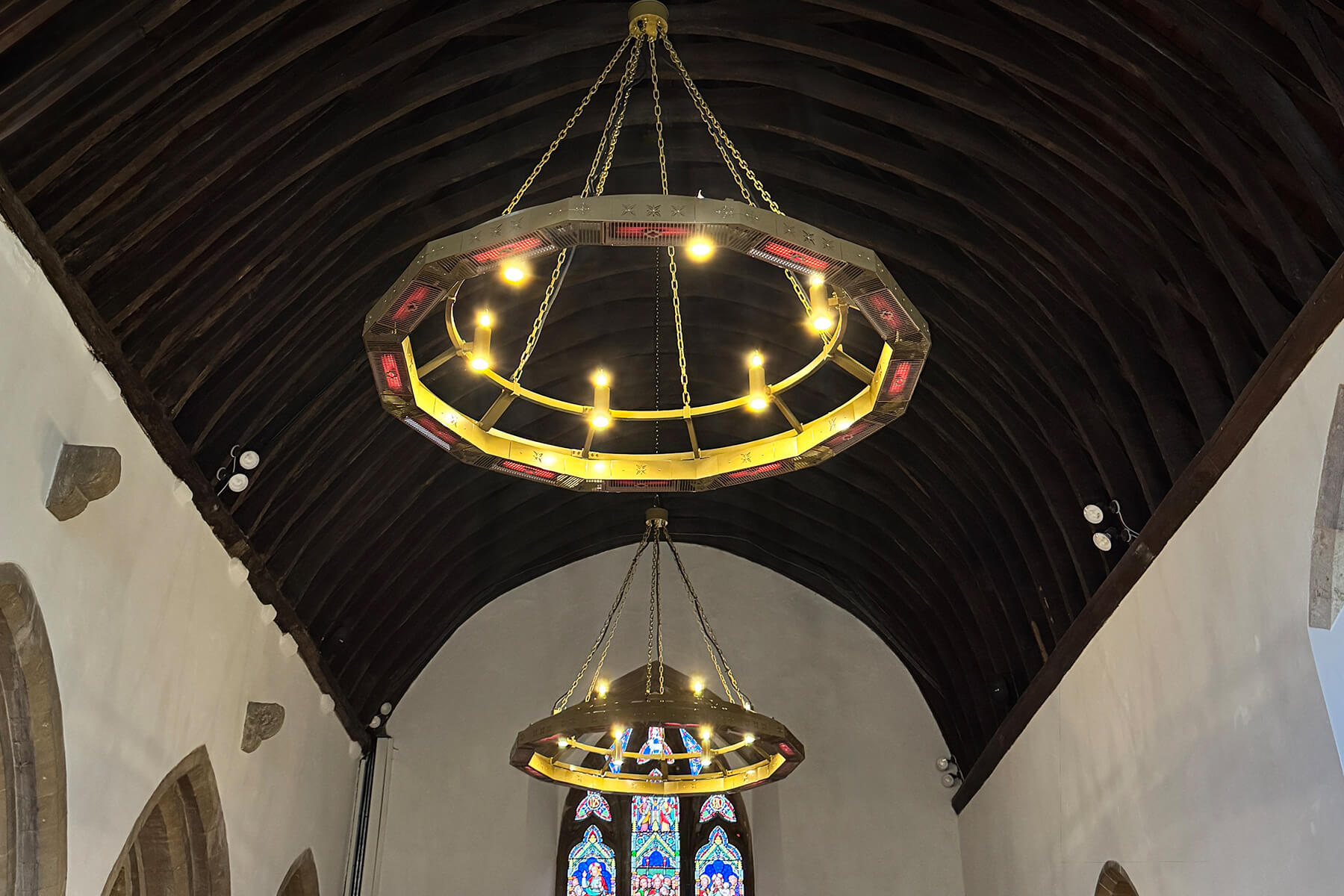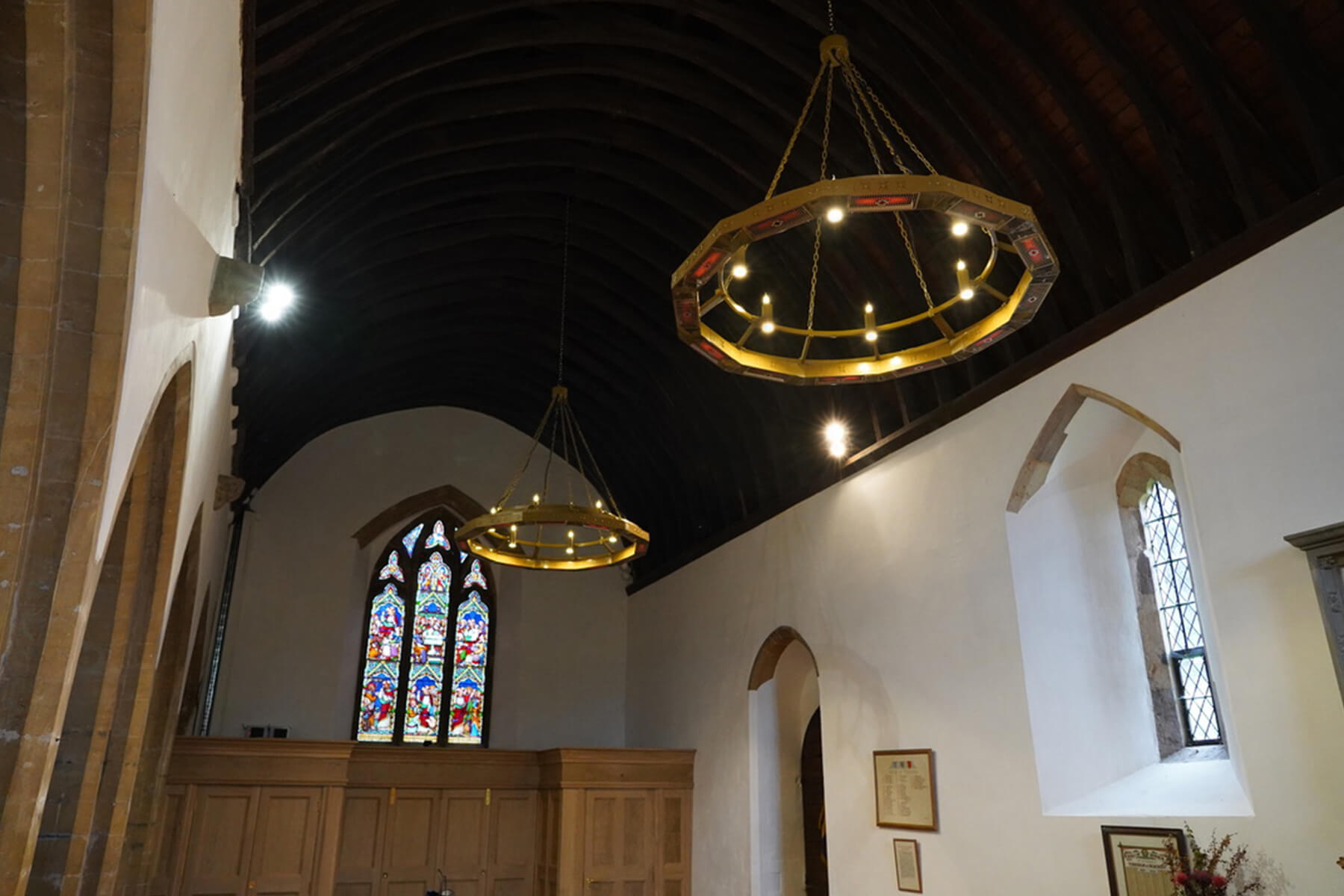St Mary & St Peter Church in Tidenham, a Grade II* listed 13th-century building with Saxon foundations, has recently undergone an impressive transformation to serve both its congregation and the wider community. Once limited by fixed pews and inefficient heating, the church has now become a flexible, multi-purpose venue combining its historical beauty with modern functionality.
As part of its renovation, the church installed two Shadow Chandeliers, providing both efficient heating and elegant illumination. The chandeliers have played a central role in enhancing comfort and usability within the space, particularly during colder months.
Like many historic churches, St Mary & St Peter faced several key challenges:
The installation of two Shadow Chandeliers at St Mary & St Peter Church, demonstrates how modern heating technology can transform a centuries-old church into a vibrant, comfortable community space.
By balancing tradition with innovation, the church has preserved its heritage while creating a future-proof environment warm, welcoming and ready for generations to come.
To meet the church's heating needs, Shadow Industrial installed two Shadow Chandelier heaters, carefully positioned to provide optimal warmth without compromising the church's architectural integrity.


The installation of the new heating system has greatly improved warmth and comfort throughout the main worship area, receiving highly positive feedback from the congregation. The energy-efficient performance has reduced reliance on outdated bar heaters, while the church's newly flexible layout now supports a wide range of worship and community activities.
Most importantly, these modern upgrades have been sensitively integrated within the church's 13th-century architecture, preserving its historic character while ensuring it remains a welcoming and functional space for future generations.


Most companies today want to reduce or eliminate their net contribution to greenhouse gasses - but it can be hard to know where to begin.
What will have the most impact? One focus area for many organisations is their energy use and heating.
Gas-based systems are falling out of favour as they generate significant carbon emissions. Instead, many are turning to electric infrared heating as this offers the potential for zero emissions at the point of use if renewable energy is used to power them.
Infrared is a popular choice as it offers very high-efficiency ratings - up to 98% of energy is converted into heat. Additionally, heat isn't wasted as it can be focused on the areas that need it the most.